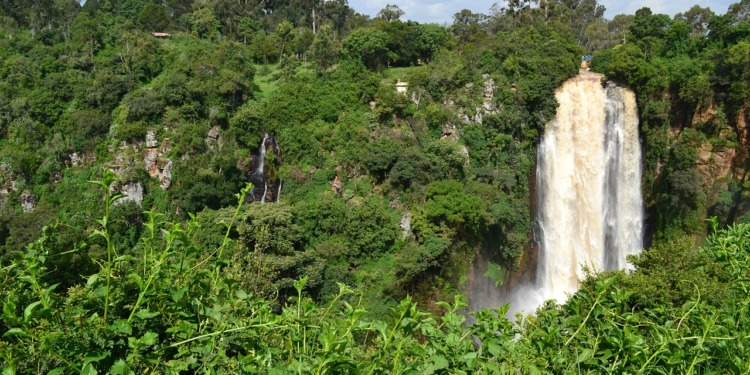Carbon markets and the sale of carbon credits can help countries and companies meet ambitious international greenhouse gas emissions reduction targets. They can also channel much-needed finance to low- and middle-income countries and facilitate investments in climate mitigation. Nonetheless, there is concern that a focus on offsetting, rather than reducing emissions, will hamper the achievement of global climate goals. There is also increasing concern about the risks that investments in carbon offsetting projects pose for the rights of Indigenous Peoples and local communities.
Indeed, such concerns led to the recent adoption of safeguards that give affected communities the chance to challenge UN-approved carbon removal projects. This important development highlights the need for governments to ensure they address the risks associated with the carbon offset deals they are negotiating.
Carbon offset deals are proliferating, raising concerns about the rights of affected communities
Earlier this month in Bonn, government negotiators approved an appeals and grievance procedure for Article 6.4 of the Paris Agreement — a market-based mechanism allowing for the voluntary trade of credits from carbon removal and emissions reduction projects. The newly agreed procedure addresses ongoing concerns that carbon markets have not always respected the rights and voices of communities upon whose land carbon removal projects take place. Provision is made under the new procedure for communities to launch appeals before carbon removal projects registered under Article 6.4 begin, and to air grievances throughout their duration.
In recent years, the pace and scale of large-scale land-based investments for carbon removal have increased. Investors are negotiating deals with governments to take control of large tracts of (often forested) land in developing countries. Carbon fixed by this land is then turned into carbon credits for trading on emerging international carbon markets.
This has been driven in part by the Paris Agreement, which allows countries and companies to “offset” their emissions by investing in carbon reduction, avoidance or removal elsewhere, such as under schemes like REDD+. A recent report finds that governments have already proposed approximately 1 billion hectares of land for land-based carbon removal as part of their climate mitigation pledges.
One Dubai-based investment company made headlines for negotiating memorandums of understanding (MoUs) in five sub-Saharan African countries — Kenya, Tanzania, Zimbabwe, Zambia, and Liberia — assuming control over millions of hectares of forested land upon which it plans to support the protection and rejuvenation of forests for the generation of carbon credits to be sold on the emerging international voluntary carbon market.
However, while some claim that such carbon offset deals bring a range of benefits for livelihoods and the environment, others, including non-governmental organizations and media outlets, have questioned their benefits and highlighted the risks they pose. There are serious concerns about the potential of carbon markets to contribute to emissions reductions, as well as concerns about the impact of carbon offset deals on Indigenous Peoples and local communities.
In certain instances, tensions arise from governments evicting Indigenous Peoples and local communities to pave the way for such deals. In others, concerns have been raised about the contravention of local land laws which give communities ownership rights to their customary lands.
While the violation of local law and tenure rights of Indigenous Peoples and local communities are damaging in their own right, evidence suggests that land managed by Indigenous Peoples and local communities is far better preserved and less impacted by human actions. Governments considering undertaking these deals must, as a first step, ensure that they respect and protect the rights of Indigenous Peoples and local communities. Otherwise, they risk the very environmental and social outcomes they claim to safeguard.
Revisiting past mistakes: Land grabs to green grabs
As with the 2009–2010 land rush in the Global South, the large tracts of land being acquired for carbon offsetting projects are rarely idle and are either occupied by Indigenous Peoples and local communities or are a primary source of their food security and livelihoods. As such, the lack of community consultations witnessed in deals across Africa, Central America, and Asia, coupled with insufficient transparency surrounding these deals and a failure to deliver promised benefits, is fuelling grievances among affected communities and is at odds with food security and ecosystem resilience goals.
In Southeast Asia, for example, one carbon offset project violated the affected Indigenous Peoples’ right to free, prior, and informed consent and did not have a benefit-sharing agreement with any of the local communities included in the project. A recent analysis of two other carbon offset projects demonstrate that even where companies have attempted to inform, include, and benefit local populations, outcomes have not always matched intentions. This analysis reveals that despite consultation efforts, affected communities were not sufficiently informed about how their land was being used to generate income. It also shows how expected livelihood benefits from intercropping failed to arise due to the limited viability of such intercropping in practice.
Related article: Promising New Carbon Capture Method: Climate Fix or False Hope? | 6 Ways to Remove Carbon Pollution From the Sky | Leveraging the Ocean’s Carbon Removal Potential | Will International Carbon Markets Finally Deliver? | The Voluntary Carbon Market: Unregulated and Useless?
What governments can do to mitigate the risk of green grabbing
Governments should carefully assess whether these carbon offset deals benefit their people and further national sustainable development objectives. If they do choose to undertake such deals, governments should design and use robust legal frameworks to select, negotiate, and implement quality projects. Taking the following steps will help.
1. Ensure robust and appropriate laws are in place and that deals are negotiated and implemented in line with these laws.
It is important for governments to design robust laws that put measures in place to safeguard the rights of local communities, mitigate emissions, and regulate the sale and taxation of carbon credits. However, adequate enforcement mechanisms are also needed to ensure these laws are followed.
Comprehensive, well-enforced laws remain the best way to ensure investments related to land and other natural resources respect the rights of legitimate tenure holders, promote local food security, and contribute positively to building climate resilience. This is particularly true for carbon offset projects.
Robust laws also make clear the requirements for the sustainable use of a country’s natural resources, as well as access rights for communities who may be dependent on these resources for their livelihoods. Early screening and proper due diligence of an investment proposal should be done to ensure investments follow national laws and policies. These processes, which are in the interest of all, reduce the risk of losses for the government and the community.
Ghana’s national framework on international carbon markets and non-market approaches, for example, provides guiding principles and requirements on how the authorization, tracking, and reporting of voluntary carbon market transactions and granting of formal recognition to offset credits arising from voluntary carbon market projects should occur. It also emphasizes the need for environmental integrity, transparency, and promotion of sustainable development.
Where laws are not up to date or robust in addressing these issues, governments can turn to their own nationally developed model contracts that integrate international best practice and principles on responsible investment as a basis for drawing up fair and equitable deals with investors. Such a tool would act as a stopgap in the interim as they work toward reforming their laws more holistically. The goal of model contracts is to help ensure that long-term land leases are done responsibly, with the necessary safeguards to protect local communities, their livelihoods, and the environment.
2. Establish appropriate local grievance mechanisms for affected communities.
While the recent approval of an appeals and grievance procedure is an important step in the establishment of a global carbon market under the Paris Agreement, more needs to be done to provide other avenues for affected peoples and communities to assert their rights, including in the context of carbon deals negotiated outside the scope of the Paris Agreement.
Currently, only one voluntary carbon market standards body, Gold Standard, provides appropriate recourse for communities to file grievances when affected by climate projects. “Appropriate” in this instance means following the six key criteria of the UN Guiding Principles on Business and Human Rights: accessibility, transparency, predictability, independence, adequacy, and safeguards for communities. It is critical that governments ensure that the carbon offset deals they negotiate provide appropriate grievance mechanisms for affected peoples and communities.
3. Carefully use MOUs to develop a roadmap for collaboration and map out steps toward successful project implementation.
Carbon offset deals often start with an MoU between the government and the investor, as a first formal step toward collaboration. This early phase is crucial, as there are many important considerations before an investment takes place and an agreement is finalized. Yet despite this, MOUs are frequently rushed or not carefully vetted, as they are seen as “soft” agreements that do not bear legal consequences and that mostly serve to provide comfort or assurances to the investor. This practice represents a missed opportunity.
Well-crafted MoUs can help ensure that Indigenous Peoples and local communities affected by these deals are adequately consulted by detailing how such consultation shall be done. In addition, an MoU can also specify when an investor should provide information on the investment project proposal to the relevant government authorities to enable them to undertake timely, thorough, and systematic due diligence and screening of the proposed project.
** **
 This article was originally published by the International Institute for Sustainable Development (IISD) and is republished here as part of an editorial collaboration with the IISD. It was authored by Claire McConnell, Policy Advisor at IISD, Nyaguthii Maina, an IISD Associate, and Sean Woolfrey, IISD’s Sustainable Agriculture and Food Systems Lead. The authors would like to thank Suzy Nikièma for her contributions to this article.
This article was originally published by the International Institute for Sustainable Development (IISD) and is republished here as part of an editorial collaboration with the IISD. It was authored by Claire McConnell, Policy Advisor at IISD, Nyaguthii Maina, an IISD Associate, and Sean Woolfrey, IISD’s Sustainable Agriculture and Food Systems Lead. The authors would like to thank Suzy Nikièma for her contributions to this article.
Editor’s Note: The opinions expressed here by the authors are their own, not those of Impakter.com — Cover Photo Credit: Needpix.










